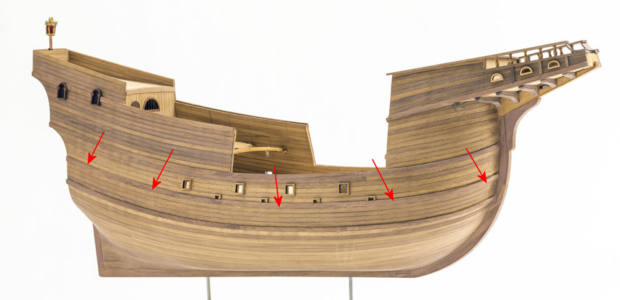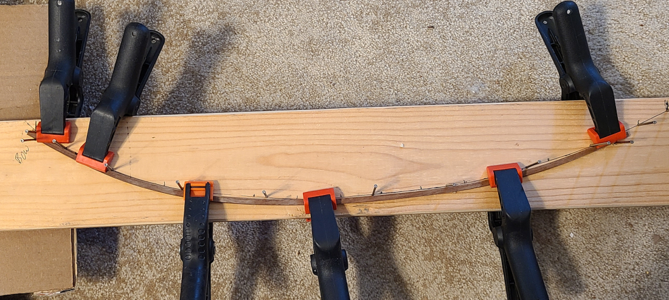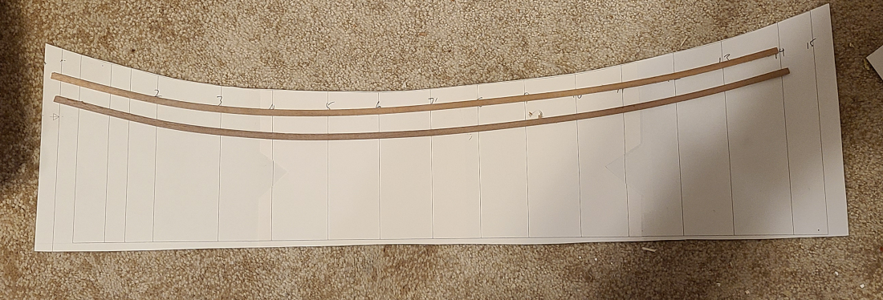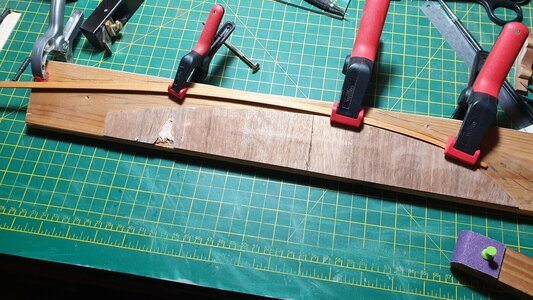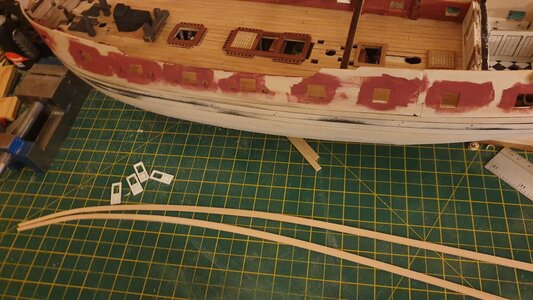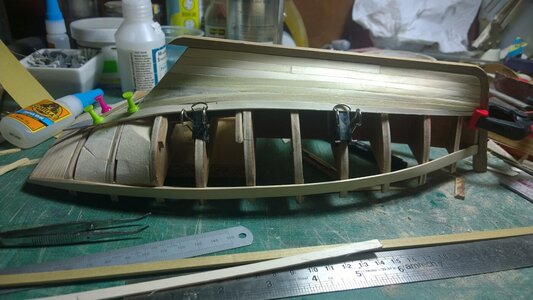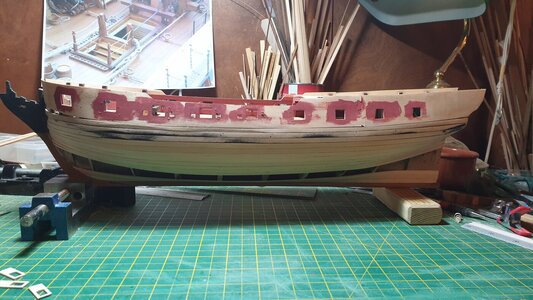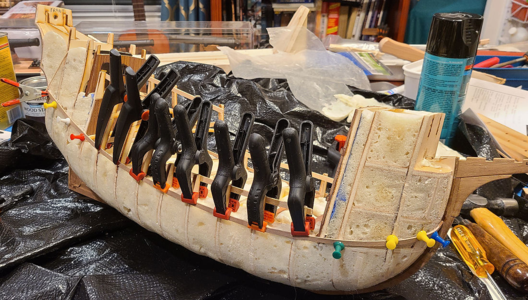I'm building MarisStella's kit of the Ragusian Carrack, and like all 16th century and earlier ships, it has an extreme curve to the wales, strakes and planking, the bow in particular. The bow is almost completely circular when looked at from above (not unusual), but the wales and planking have a fairly extreme upward curve as well. The planking strips are 1.5x4mm, and bend fairly well on one direction (obviously), especially when soaked in water and heated. And they can be made to bend in the "hard" direction if held tightly to the hull or surface they're being bend against. But of course the bow of this mode has them bending in both ways. I realize that to an extent this type of double bend can be forced, but the inner (top) of the strip really wants to bow out to prevent a good fit. I've looked at some planking articles and books and they don't seem to address this particular problem.
Is there a method of doing this? My goal is to pre-bend strips to the proper profile before applying them. Easy direction - no problem. Hard direction, on top of easy direction, and I have no idea how to accomplish this. Should I soak and try bending the strips at the bow end the hard way first, let dry, then make the main curve? Will the first bend "unbend" when making the second one?
I would have thought that planks/strips should be applied and bent the "easy way" and just have them end up at the end at the height they end up at, without trying to bend them upwards as well. In fact, I would have thought that would be the way real ships would be made as well. But that is not how this ship, or the model of this ship, is apparently made. Any help or ideas about how to accomplish this would be appreciated.
Is there a method of doing this? My goal is to pre-bend strips to the proper profile before applying them. Easy direction - no problem. Hard direction, on top of easy direction, and I have no idea how to accomplish this. Should I soak and try bending the strips at the bow end the hard way first, let dry, then make the main curve? Will the first bend "unbend" when making the second one?
I would have thought that planks/strips should be applied and bent the "easy way" and just have them end up at the end at the height they end up at, without trying to bend them upwards as well. In fact, I would have thought that would be the way real ships would be made as well. But that is not how this ship, or the model of this ship, is apparently made. Any help or ideas about how to accomplish this would be appreciated.



